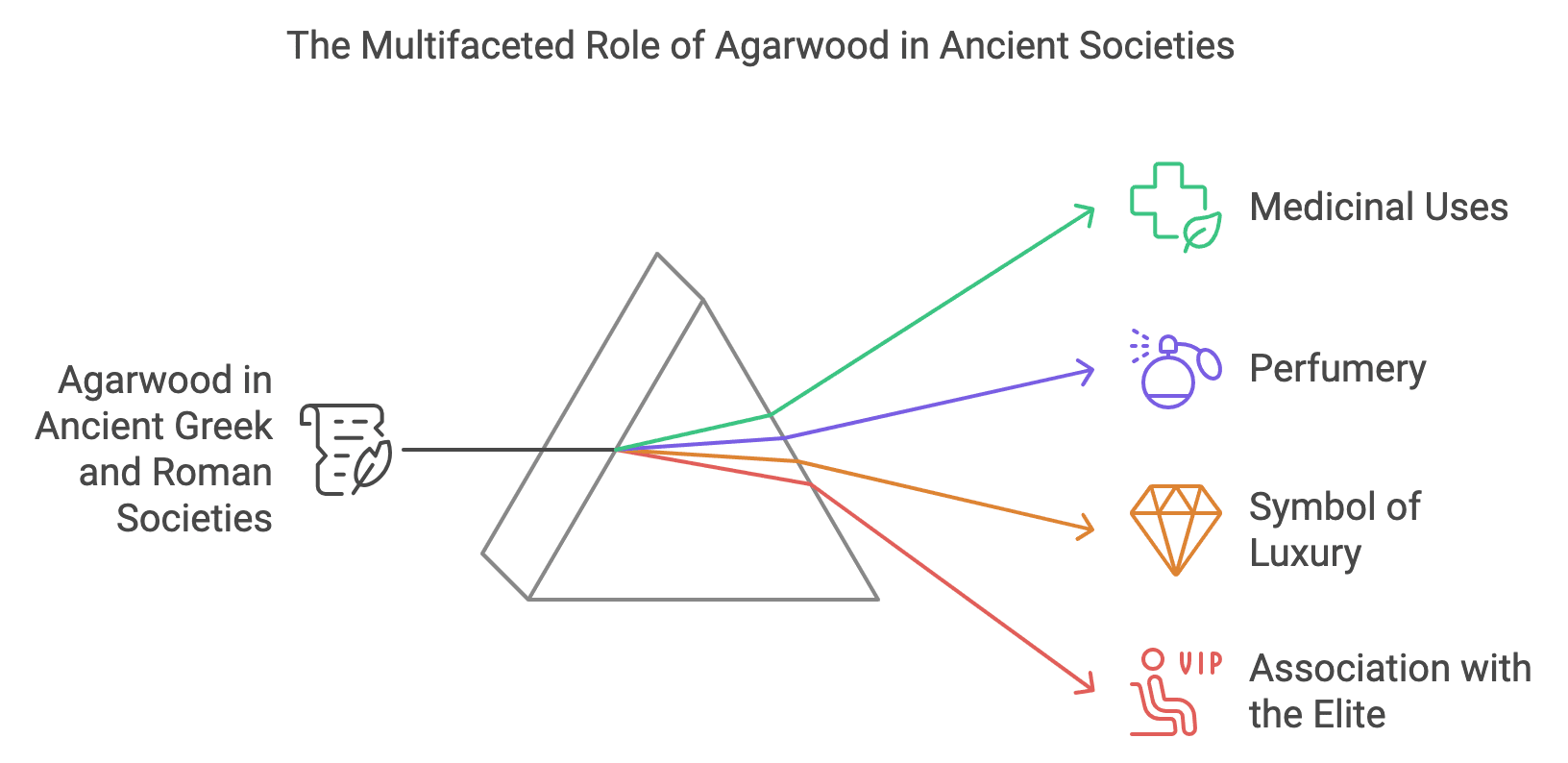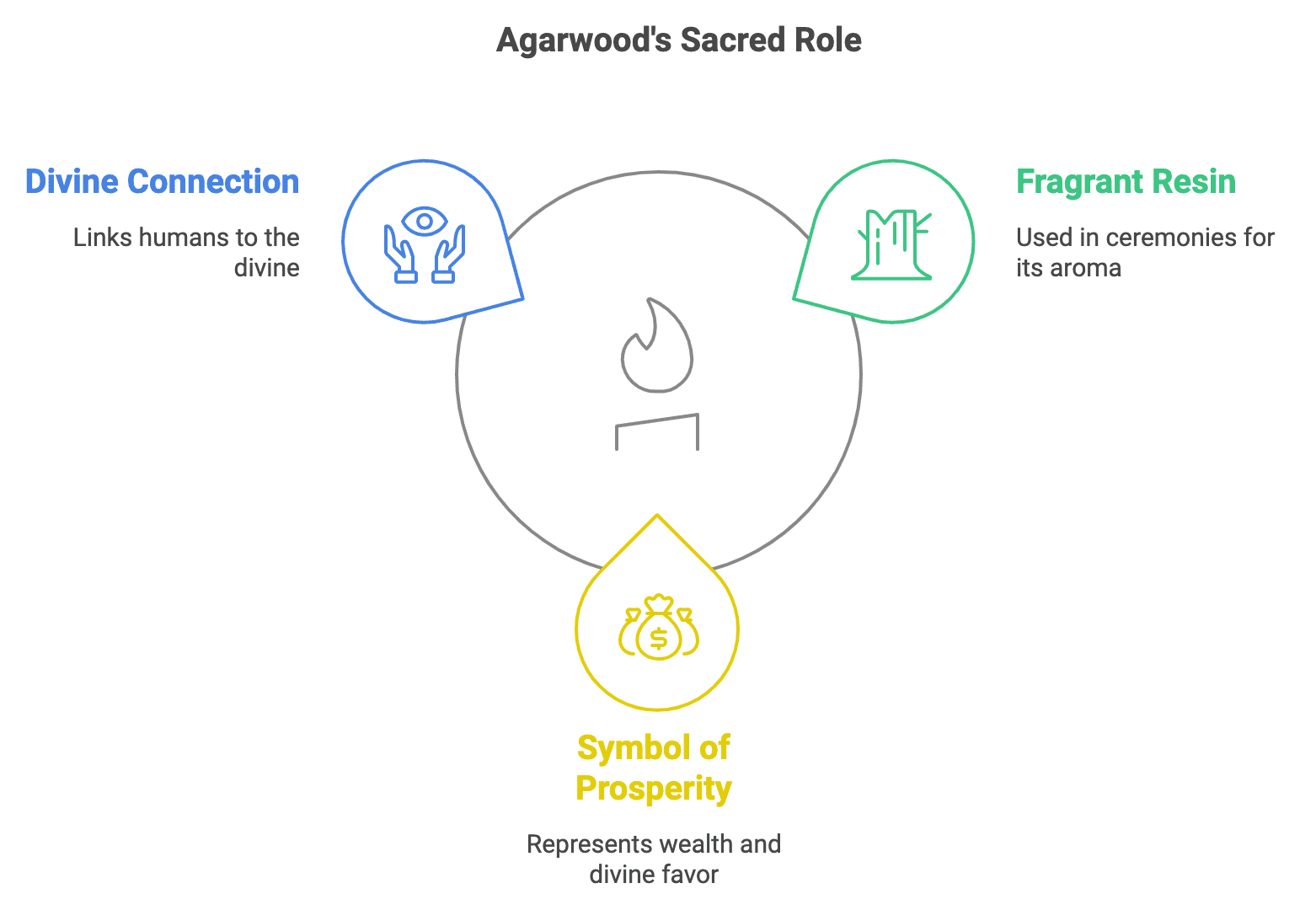
Agarwood*, often revered as “the wood of the gods,” has played a pivotal role in the history and culture of many civilizations. This sacred wood is not just a commodity but a symbol of spirituality, wealth, and tradition. In this article, we will delve into the rich history and cultural significance of agarwood, exploring its journey through ancient civilizations, its role in religion and beliefs, and its impact on art and literature.
Table of Contents
Toggle
Introduction
For thousands of years, agarwood has been cherished across continents for its unique aroma and profound spiritual significance. From being mentioned in the Bible to its use in traditional rituals, this precious natural resource has woven itself into the fabric of human history. Let’s explore the historical significance and the traditional uses of agarwood that have shaped cultures worldwide.
I. Historical Use of Agarwood
1. Agarwood in Ancient Civilizations
Egyptian Civilization
In ancient Egypt, agarwood was highly valued for its use in embalming practices and as an ingredient in incense for religious ceremonies. The Egyptians believed that its aromatic properties could aid the journey to the afterlife, ensuring a peaceful transition and divine protection.

Greek and Roman Empires
The Greeks and Romans imported agarwood via historical trade routes, using it in medicine and perfumery. It was a symbol of luxury and was often associated with the elite. The use of agarwood among the upper classes showcased its esteemed status, as it was reserved for those who could afford such opulence.

Ancient China
In China, agarwood was used in traditional medicine and as a key element in various rituals. It was believed to purify the mind and spirit, playing a crucial role in spiritual practices. The connection between agarwood and spirituality is reflected in its frequent use during ancestral worship and other important ceremonies.

2. Agarwood in Trade and Commerce
The Silk Road
During the height of the Silk Road, agarwood became one of the most precious commodities exchanged between the East and West. Its rarity and the complexity of its harvesting made it a highly sought-after item. The trade routes facilitated not only the exchange of goods but also the sharing of cultures and ideas surrounding the use of agarwood.

Arab Traders
Agarwood arabic connections were established as Arab traders introduced agarwood to the Middle East and Europe. They called it “oud,” and it became an integral part of their incense traditions and perfumery. The popularity of oud in Arab culture reflects the lasting impact of agarwood on the region’s cultural practices and its enduring appeal in modern perfumery.

“To get a foundational understanding of what agarwood is, consider reading What is Agarwood? Exploring Nature’s Precious Scent”
II. Agarwood in Religion and Beliefs
1. Agarwood in the Bible
Agarwood in the Bible is referenced as “aloes” in several passages. It was used for its fragrant resin in religious ceremonies and was considered a symbol of prosperity and divine blessing. The sacred nature of agarwood is further highlighted in its usage during significant events, symbolizing a connection to the divine.
- Example: In Psalm 45:8, it states, “All your robes are fragrant with myrrh and aloes and cassia…”

2. Agarwood in Islam
Cultural Significance in Islamic Traditions
In Islamic culture, agarwood (oud) holds a special place. It is used extensively in religious ceremonies, perfumery, and as a sign of hospitality. The fragrant wood enhances the spiritual atmosphere during prayer and gatherings, embodying warmth and generosity.

Hadith and Sunnah References
The Prophet Muhammad is reported to have mentioned agarwood in Hadiths, highlighting its importance. Burning agarwood is a common practice during special occasions and prayers, reinforcing its sacredness in Islamic tradition.
3. Agarwood in Buddhism and Other Religions
Buddhism
In Buddhist traditions, agarwood is used as an aid for meditation and achieving higher levels of consciousness. Its aromatic incense is believed to clear the mind and enhance focus, fostering a deeper connection during meditation.

Hinduism and Taoism
Similarly, in Hindu and Taoist practices, agarwood plays a role in rituals aimed at purification and connection with the divine. Its use in these spiritual traditions underscores the wood’s significance across various belief systems.

“For a broader perspective on its global impact, see Agarwood: A Journey Through History and Global Cultures”
III. Cultural Significance of Agarwood
1. Agarwood in Middle Eastern Culture
Symbol of Wealth and Luxury
In the Middle East, agarwood is synonymous with opulence. It is used in making some of the world’s most expensive perfumes and is a staple in aromatic practices. The high value placed on agarwood reflects its rarity and the craftsmanship involved in creating high-quality products.

2. Agarwood in East Asian Culture
Japan
In Japan, the art of “Kōdō” or “the way of fragrance” revolves around the ceremonial appreciation of agarwood scents. It’s considered one of the three classical Japanese arts of refinement, showcasing the cultural reverence for the wood.

China and Vietnam
In China and Vietnam, agarwood is used in traditional medicine and is a symbol of status and learning. It is also significant in feng shui, believed to bring balance and harmony to living spaces, enhancing the well-being of those who dwell there. Agarwood incense holds profound cultural significance in various rituals.

3. Agarwood in Art and Literature
Poetry and Literature
Agarwood has inspired poets and writers throughout history. Its elusive scent and rarity have been metaphors for beauty, mystery, and the divine in many literary works.
- Example: In classical Persian poetry, agarwood is often referenced as a symbol of love and longing.
Art and Music
Artists and musicians have been inspired by agarwood’s legacy, incorporating its themes into paintings and compositions, further cementing its place in cultural history. The evocative qualities of agarwood resonate across artistic mediums, enriching the creative landscape.

“Explore how different cultures utilize agarwood in Agarwood in Different Cultures “. Understanding these cultural nuances adds depth to its historical importance.
IV. Preservation and Promotion of Agarwood’s Cultural Value
Current Challenges
The increasing demand for agarwood has led to over-harvesting, threatening the survival of Aquilaria species. This not only endangers the species but also risks losing a significant part of cultural heritage. The delicate balance between demand and sustainability must be addressed to preserve both the resource and its cultural significance.
Conservation Efforts
Efforts are being made globally to promote the sustainability of agarwood through regulated cultivation and harvesting practices. Organizations and governments are working together to create guidelines that protect agarwood species while allowing communities to benefit economically. The historical context of agarwood emphasizes the need for sustainable harvesting practices to preserve its legacy.

Education and Awareness
Raising awareness about the cultural significance of agarwood is crucial. Educational programs and cultural exchanges can help preserve traditional practices and ensure respectful use. By educating communities and consumers about the importance of sustainable practices, we can protect agarwood for future generations.
Conclusion
From ancient rituals to modern perfumery, agarwood has left an indelible mark on human history. Its traditional uses and profound spiritual significance underscore the need to preserve this precious natural resource.
As we continue to appreciate the rich tapestry of traditions woven around agarwood, it is imperative that we also commit to its preservation. By understanding and honoring the cultural heritage associated with agarwood, we can ensure that future generations will also experience its timeless allure.
FAQs
- Why is agarwood considered so valuable? Agarwood is valuable because of its rarity, complex formation process, and unique aromatic qualities. Only certain Aquilaria trees that undergo a natural infection produce the resin required for agarwood, making it a rare and precious commodity. Its historical, spiritual, and cultural significance across various civilizations also contributes to its high value.
- How is agarwood used in different cultures and religions? Agarwood is widely used in religious rituals, such as meditation and prayer, in Buddhism, Hinduism, and Islam. In Islamic culture, it’s known as “oud” and is commonly used in perfumery and as incense. In Japan, it plays a central role in Kōdō, the “way of fragrance,” while in China, it is valued for its medicinal properties and spiritual importance.
- What is the difference between oud and agarwood? Oud refers specifically to the essential oil extracted from agarwood, while agarwood is the resinous heartwood itself. Oud oil is derived from agarwood through distillation and is used in high-end perfumes and aromatherapy.
- Why is agarwood associated with luxury and status? Historically, agarwood was a rare and costly material, often reserved for the elite and used in ceremonies and high-end perfumery. Its scarcity and the intricate cultivation required for its production have cemented its reputation as a symbol of wealth and luxury in many cultures, especially in the Middle East and East Asia.
- How can agarwood be preserved for future generations? Agarwood preservation involves sustainable cultivation and harvesting practices, legal regulation, and consumer awareness. Organizations like CITES help regulate trade, and sustainable plantations are promoting ethical production. Supporting responsible sourcing and conservation efforts can help ensure agarwood’s availability in the future.
- What are the current threats to agarwood species? Over-harvesting, illegal logging, and habitat destruction are major threats to agarwood species. The high demand for agarwood products, combined with the slow growth of Aquilaria trees, has led to a decline in natural populations. Sustainable practices and conservation programs are essential to address these challenges.
Author
Tran Thi Bich Ngoc is the Head of Production at Oudgo, overseeing the entire production process from agarwood harvesting to processing and packaging the final products. She holds a Bachelor’s degree in Biotechnology from Hanoi University of Science and Technology and brings over fifteen years of experience in the agarwood production industry. Prior to joining Oudgo.Ms. Ngoc worked with companies specializing in the production of natural cosmetics and health care products. Her extensive expertise ensures the highest quality and efficiency in Oudgo’s production operations, contributing significantly to the company’s reputation for excellence see more
